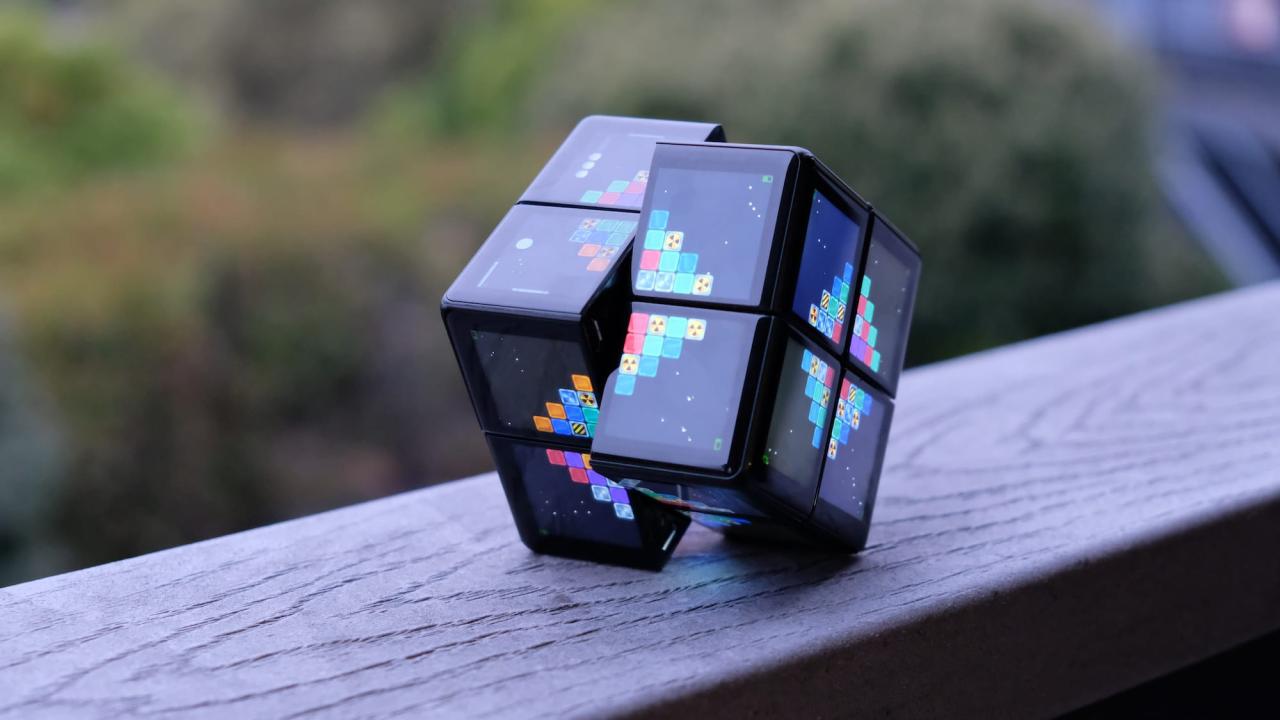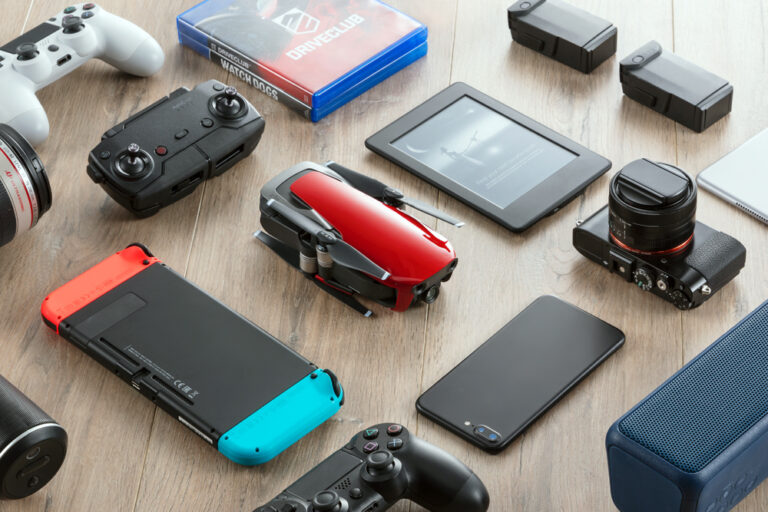The relentless march of technology brings with it a constant stream of innovation, and the realm of personal devices is no exception. We’re living through an exciting period where next-gen gadgets are arriving, pushing the boundaries of what’s possible and fundamentally reshaping our daily interactions, work, entertainment, and even our health. This comprehensive exploration delves into the cutting-edge devices that are currently emerging and those on the horizon, uncovering the underlying technologies that power them, and examining the profound impact they have on our lives. We’ll explore how these gadgets are not just incremental upgrades, but truly transformative tools, designed to offer unparalleled convenience, connectivity, and intelligence.
The Driving Forces Behind Next-Gen Gadgets

The evolution of personal technology is not random; it’s propelled by several foundational technological advancements that enable devices to become smaller, faster, smarter, and more integrated into our lives.
A. Artificial Intelligence (AI) and Machine Learning (ML): The “brain” behind many next-gen gadgets, AI allows devices to learn from user behavior, process natural language, recognize patterns, and make intelligent decisions.
* On-Device AI: Increasingly, AI processing is happening directly on the device, rather than solely in the cloud. This improves privacy, reduces latency, and allows for real-time responsiveness in features like advanced camera processing, personalized recommendations, and efficient power management.
* Predictive Capabilities: AI enables gadgets to anticipate user needs, whether it’s suggesting the next song, optimizing battery life based on usage patterns, or providing proactive health alerts.
* Natural Language Understanding: Voice assistants are becoming far more sophisticated, understanding nuanced commands and engaging in more natural conversations, making interactions with devices more intuitive.
B. Advanced Sensors and Miniaturization: The ability to pack more powerful and diverse sensors into ever-smaller form factors is crucial for next-gen gadgets.
* Biometric Sensors: Fingerprint scanners, facial recognition, heart rate monitors, blood oxygen sensors, ECG sensors, and even continuous glucose monitors are becoming standard, enabling secure authentication and comprehensive health tracking.
* Environmental Sensors: Devices now often include sensors for air quality, temperature, humidity, and UV light, allowing them to provide context-aware information and interact with smart home ecosystems.
* Miniaturization: Advances in semiconductor manufacturing, battery technology, and component design allow for incredible power and functionality to be squeezed into devices that are lightweight, sleek, and comfortable to wear or carry.
C. Enhanced Connectivity: 5G, Wi-Fi 6E/7, and Beyond: Faster and more reliable wireless communication is the backbone of seamless device interaction and cloud integration.
* 5G: Provides ultra-fast speeds, extremely low latency, and massive capacity, enabling real-time cloud gaming, remote surgery, and reliable connectivity for vast numbers of IoT devices. Its widespread deployment is critical for many next-gen applications.
* Wi-Fi 6E and Wi-Fi 7: Deliver significantly faster speeds, lower latency, and improved efficiency for local networks, essential for high-bandwidth applications like virtual reality, 8K streaming, and multi-device smart home ecosystems.
* Ultra-Wideband (UWB): Enables precise spatial awareness and secure short-range communication, crucial for features like accurate item tracking (e.g., Apple AirTags), digital car keys, and enhanced augmented reality experiences.
D. Immersive Technologies: AR/VR/MR: These technologies aim to blend or replace our perception of reality, opening up new interaction paradigms.
* Augmented Reality (AR): Overlays digital information onto the real world through smartphone screens or smart glasses. This allows for interactive navigation, virtual try-ons for shopping, and educational experiences that blend physical and digital content.
* Virtual Reality (VR): Creates fully immersive, simulated environments, transporting users to different worlds for gaming, training, virtual meetings, and experiential learning. Advances focus on higher resolution, wider fields of view, and more comfortable headsets.
* Mixed Reality (MR): Blends AR and VR, allowing digital objects to interact with the real world in a more sophisticated way than AR, often with a deeper understanding of the physical environment.
E. Advanced Materials and Form Factors: Innovation in materials science allows for more durable, flexible, and aesthetically pleasing device designs.
* Foldable and Rollable Displays: Flexible OLED technology enables devices that can fold or roll, creating larger screen real estate in a compact form factor, or allowing for entirely new types of gadgets (e.g., rollable phones, foldable laptops).
* Self-Healing Materials: Research into materials that can automatically repair minor scratches or cracks could significantly extend the lifespan of devices.
* Sustainable Materials: Growing emphasis on using recycled content, bio-based plastics, and ethically sourced materials in device manufacturing to reduce environmental impact.
Next-Gen Gadgets Reshaping Key Aspects of Life
The convergence of these technologies is giving rise to a new generation of gadgets that are profoundly influencing how we work, play, connect, and live.
1. Communication and Connectivity
While the smartphone remains central, next-gen gadgets are expanding and diversifying our communication channels.
A. Advanced Smartphones: Phones are becoming more than just communication devices. They are integrating cutting-edge camera systems with computational photography (AI-driven image processing), hyper-fast 5G connectivity, and on-device AI for seamless personalized experiences. Foldable phones are slowly becoming mainstream, offering tablet-sized screens in pocketable designs.
B. Smartwatches and Wearables 2.0: Beyond basic notifications, next-gen smartwatches offer advanced health tracking (ECG, blood oxygen, temperature sensing, continuous glucose monitoring), robust fitness features with GPS, and even cellular connectivity for standalone operation. They are becoming critical health companions and personal safety devices.
C. True Wireless Earbuds with AI: These are evolving beyond just audio. Features like active noise cancellation, spatial audio, real-time language translation, and integrated AI assistants are becoming standard. Some models incorporate bio-sensors for fitness tracking or even neural interfaces for subtle control.
D. Smart Glasses and AR Headsets: Devices like the Apple Vision Pro and Meta’s ongoing AR efforts are moving towards true mixed reality experiences. These allow users to overlay digital information onto their view of the real world, enabling hands-free navigation, contextual information display, and immersive communication without staring at a phone screen.
E. Satellite Connectivity for Consumer Devices: Emerging smartphone and wearable technology is integrating satellite communication capabilities for emergency SOS features in remote areas, bridging gaps in traditional cellular coverage. This is a significant safety advancement.
2. Health and Wellness
Next-gen gadgets are transforming personal health management, shifting towards proactive monitoring and personalized insights.
A. Continuous Health Monitors: Wearable patches and advanced smartwatches are moving beyond intermittent readings to offer continuous monitoring of vital signs like heart rate, blood pressure, blood glucose (non-invasively), and even early detection of fevers or sleep apnea, providing real-time alerts and long-term health trends.
B. Smart Rings and Discreet Wearables: Devices like the Oura Ring offer sophisticated health tracking (sleep, activity, heart rate variability) in a discreet form factor, appealing to users who prefer less intrusive wearables. These devices seamlessly integrate with health apps for comprehensive data analysis.
C. AI-Powered Fitness Trackers: These trackers use AI to provide personalized workout recommendations, analyze gait and form during exercise, and offer recovery insights, acting as a personal coach on your wrist. They can adapt suggestions based on performance and fatigue levels.
D. At-Home Diagnostic Devices: Portable, user-friendly devices that allow for basic medical tests (e.g., urine analysis, rapid pathogen detection) at home, providing quick results and enabling early intervention or remote consultations with doctors.
E. Stress and Mental Well-being Trackers: Gadgets incorporating biofeedback sensors (e.g., skin conductance, heart rate variability) and AI to monitor stress levels, provide guided breathing exercises, and offer personalized recommendations for mental well-being and improved focus.
3. Entertainment and Immersion
The way we consume entertainment is becoming increasingly immersive and interactive.
A. Advanced VR/AR Headsets: High-resolution displays, wider fields of view, haptic feedback, and improved inside-out tracking are making VR gaming, virtual concerts, and immersive storytelling incredibly lifelike. AR is enhancing live events and daily entertainment with interactive overlays.
B. Portable Gaming Devices: The resurgence of powerful handheld gaming consoles (e.g., Steam Deck, Nintendo Switch) and advancements in cloud gaming services allow console-quality gaming experiences on the go, anywhere with a strong internet connection.
C. Next-Gen Smart TVs and Home Entertainment Systems: 8K resolution, advanced OLED/QD-OLED displays, AI-powered upscaling, and spatial audio technologies are transforming living rooms into cinematic experiences. Integration with smart home ecosystems creates seamless entertainment environments.
D. Holographic Displays (Early Stages): While still in nascent stages, research into true volumetric holographic displays promises a future where 3D content can be viewed without glasses, opening up new possibilities for entertainment, advertising, and interactive experiences.
E. AI-Enhanced Content Creation Tools: Gadgets and software leveraging AI to assist in creating music, art, and video content, making professional-level creative tools more accessible to a wider audience, and potentially leading to entirely new forms of interactive entertainment.
4. Productivity and Work
Next-gen gadgets are designed to make work more efficient, flexible, and integrated, blurring the lines between personal and professional tools.
A. Foldable Laptops and Tablets: These devices offer the versatility of a tablet for portability and media consumption, combined with the productivity of a laptop when unfolded, catering to hybrid work environments and diverse user needs.
B. Portable Monitors and Docking Stations: Lightweight, slim portable monitors (often USB-C powered) allow users to extend their screen real estate anywhere, transforming a tablet or laptop into a multi-monitor workstation on the go. Smart docking stations streamline connectivity for multiple peripherals.
C. Smart Pens and Digital Notepads: Enhanced smart pens offer more precise writing and drawing, with instant digitization and cloud synchronization. Digital notepads provide the feel of paper with the benefits of digital organization, perfect for brainstorming and sketching.
D. AI-Powered Collaboration Tools: Gadgets integrated with AI for real-time transcription of meetings, intelligent summarization, and language translation, making remote and international collaboration more seamless and productive.
E. Wearable Keyboards and Input Devices: Innovative input methods like projection keyboards, ring-style mouse controllers, and gesture-based interfaces are emerging for ultimate portability and discrete interaction with devices, particularly useful for AR glasses or mobile productivity.
5. Smart Home and Environment
The smart home is evolving beyond individual devices to become a cohesive, intelligent ecosystem.
A. Centralized Smart Hubs: More sophisticated smart home hubs with integrated AI assistants, UWB for precise device location, and support for multiple communication protocols (Wi-Fi, Zigbee, Thread, Matter) act as the brain of the connected home, orchestrating devices seamlessly.
B. Smart Appliances with AI: Refrigerators that track inventory, ovens that suggest recipes based on ingredients, and washing machines that optimize cycles based on load type, all leveraging AI for greater efficiency, convenience, and energy savings.
C. Environmental Monitoring Gadgets: Devices that continuously monitor indoor air quality (VOCs, particulate matter, CO2), temperature, humidity, and even sound levels, providing alerts and automatically adjusting smart home systems (e.g., HVAC, air purifiers) for optimal comfort and health.
D. Robotic Assistants for Home: While robotic vacuums are common, future homes may see more advanced robotic assistants for tasks like window cleaning, security patrols, delivering items within the home, or even basic cooking assistance, operating autonomously within the living space.
E. Energy Management Gadgets: Smart plugs, thermostats, and energy monitors that use AI to learn usage patterns and optimize energy consumption, identifying energy vampires and reducing utility bills, contributing to a more sustainable household.
Challenges and Ethical Considerations of Next-Gen Gadgets

The rapid proliferation of sophisticated gadgets brings with it a host of challenges and ethical considerations that demand careful attention and proactive solutions.
1. Data Privacy and Security:
Next-gen gadgets are data-hungry, constantly collecting information about our lives, leading to significant privacy risks.
A. Massive Data Collection: Wearables track biometric data, smart home devices monitor activity, and AR/VR headsets record surroundings. This constant data stream, often including highly sensitive personal information, raises concerns about who has access to it and how it’s used.
B. Cybersecurity Vulnerabilities: More connected devices mean more potential entry points for hackers. A compromised smart home device could be a gateway to an entire network, leading to data breaches, surveillance, or even physical harm if critical systems are controlled.
C. Lack of Transparency: Users often don’t fully understand what data their gadgets collect, how it’s processed by AI, or how it’s shared with third parties, making informed consent difficult.
2. Addiction and Digital Well-being:
The immersive and always-on nature of next-gen gadgets can exacerbate issues of digital addiction and impact mental health.
A. Constant Connectivity: The seamless integration and constant notification stream can make it difficult for users to disconnect, leading to increased anxiety, sleep disturbances, and reduced real-world social interaction.
B. Escapism in VR/AR: While immersive, over-reliance on virtual worlds could lead to disengagement from physical reality and social isolation.
C. Information Overload: The sheer volume of information delivered by smart devices can be overwhelming, affecting focus and cognitive load.
3. Environmental Impact and Sustainability:
The production, use, and disposal of these increasingly complex gadgets have a significant environmental footprint.
A. Resource Extraction: Manufacturing high-tech components often requires mining rare earth minerals and other non-renewable resources, with associated environmental degradation and ethical concerns.
B. E-Waste: The rapid upgrade cycle and limited repairability of many gadgets contribute to a growing e-waste crisis. Improper disposal leads to toxic chemicals leaching into the environment.
C. Energy Consumption: While individual devices might be efficient, the sheer number of connected gadgets and their reliance on cloud infrastructure contribute to increasing energy consumption.
4. Cost and Accessibility:
Many next-gen gadgets come with premium price tags, exacerbating digital divides.
A. Exclusivity: High costs can make cutting-edge technology inaccessible to lower-income populations, widening the gap between those who can leverage these advancements and those who cannot.
B. Digital Literacy: Even if affordable, effective use of complex next-gen gadgets requires a certain level of digital literacy, which isn’t universally available.
5. Ethical AI and Bias:
The AI powering these gadgets can perpetuate and amplify existing biases.
A. Algorithmic Bias: If the AI is trained on biased data, it can lead to discriminatory outcomes in features like facial recognition, voice recognition (less accurate for certain accents), or personalized recommendations that perpetuate stereotypes.
B. Lack of Transparency (Black Box AI): Understanding how AI in a gadget makes certain decisions can be difficult, leading to trust issues and making it hard to identify and correct biases.
Conclusion
The arrival of next-gen gadgets is not just about incremental improvements; it represents a profound acceleration in our relationship with technology. These devices are becoming seamlessly integrated into our lives, offering unprecedented convenience, enhancing our capabilities, and transforming industries from healthcare to entertainment. They are driven by a powerful synergy of AI, advanced sensors, hyper-connectivity, and innovative materials, leading to experiences that are increasingly intuitive, immersive, and personalized.
However, this rapid evolution also casts a long shadow of challenges. Concerns surrounding data privacy and security, the potential for digital addiction, the environmental footprint of rampant consumption, and issues of accessibility and algorithmic bias demand our immediate and collective attention. Addressing these complexities requires a multifaceted approach: robust regulatory frameworks, ethical design principles, a commitment to sustainability in manufacturing, and widespread digital literacy education.
The future trajectory of gadgets points towards an era of ubiquitous, invisible computing, where technology anticipates our needs and seamlessly blends into our environment. From advanced AI companions to bio-integrated devices and self-powered electronics, the horizon is filled with possibilities that will continue to redefine human potential. By responsibly embracing these innovations, fostering open dialogue about their societal implications, and actively shaping their development, we can ensure that next-gen gadgets truly serve humanity’s best interests, paving the way for a more intelligent, connected, and ultimately, better quality of life for all.




